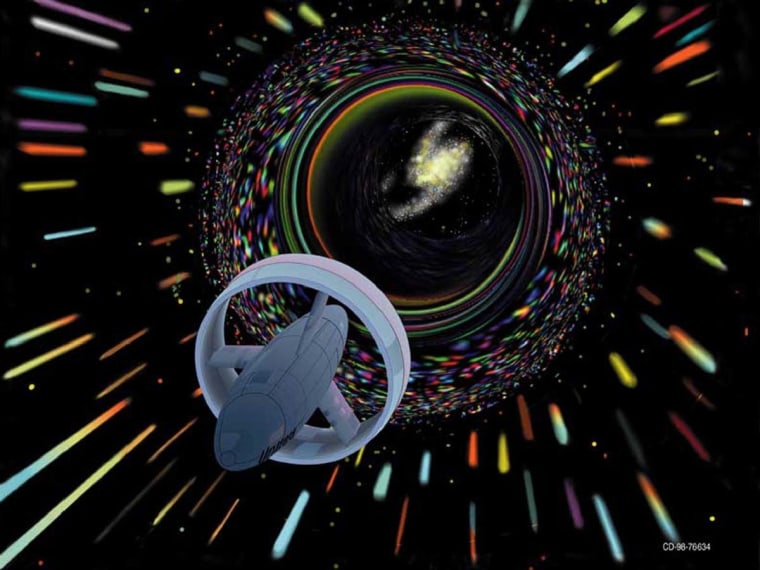Despite the fevered reports rocketing around the Internet recently, NASA is not on the verge of developing a fuel-free, faster-than-light propulsion system, space agency officials stress.
A team based at NASA's Johnson Space Center (JSC) in Houston reportedly tested a prototype engine system in a vacuum recently and determined that it produced a small amount of thrust. This news was disclosed on a NASASpaceflight.com forum earlier this year, and last week, it hit the broader Internet with a vengeance, as some pieces linked the technology to a long-sought "warp drive."
Why all the attention? The novel thruster system is based on the EmDrive, a British invention said to create thrust without propellant by bouncing microwaves around inside a chamber. If it works, the engine could revolutionize spaceflight — and it would apparently violate the laws of physics, as well. [Superfast Spacecraft Propulsion Concepts (Images)]
But NASA is downplaying the research and its potential to deliver a huge propulsion breakthrough in the near future.
"While conceptual research into novel propulsion methods by a team at NASA's Johnson Space Center in Houston has created headlines, this is a small effort that has not yet shown any tangible results," NASA officials told Space.com in a statement. "NASA is not working on 'warp drive' technology."

The novel space engine design would seem to produce more energy than is put into it, violating the law of conservation of energy, which (simply put) says that energy cannot be destroyed or created.
"The reason it's controversial is, it violates Newton's Third Law," Brian Koberlein, an astrophysicist who studies general relativity and computational astrophysics, told Space.com.
It's possible that electromagnetic leaks in the chamber or coupling with Earth's magnetic field are responsible for the supposedly impossible result, said Koberlein, who is based at the Rochester Institute of Technology. But the recent test in the vacuum chamber, if it is indeed valid, does rule out another prosaic explanation — that the engine was pushing against Earth's atmosphere in some way, he added.
Outside scientists are understandably eager to know just what the JSC Eagleworks team has managed to achieve, and how they did it. But observers can't perform such an evaluation at the moment, because the work hasn't been submitted for peer review, said Koberlein.
This is an abbreviated version of a report from Space.com. Read the full report. Follow Elizabeth Howell @howellspace, or Space.com @Spacedotcom. Space.com is also on Facebook and Google+.